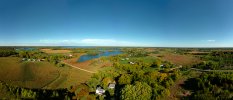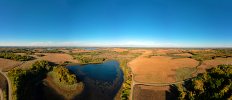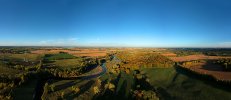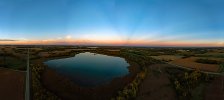I'm learning more of what our Mavic 2 Pro can do and enjoying it. Graduating out of using Auto camera settings to using the Manual settings has helped the Pano's turn out a little better. Composing the shots are still a little tricky but the more I can get out and do it the better things are turning out. Along with learning the Mavic better it's learning post editing also. I upgraded our Adobe Photoshop to 2021 and it seems to be doing very well with stitching the photo's together.
These shots were of a late afternoon start out of the house and then returning back home slightly after sunset.
These shots were of a late afternoon start out of the house and then returning back home slightly after sunset.















